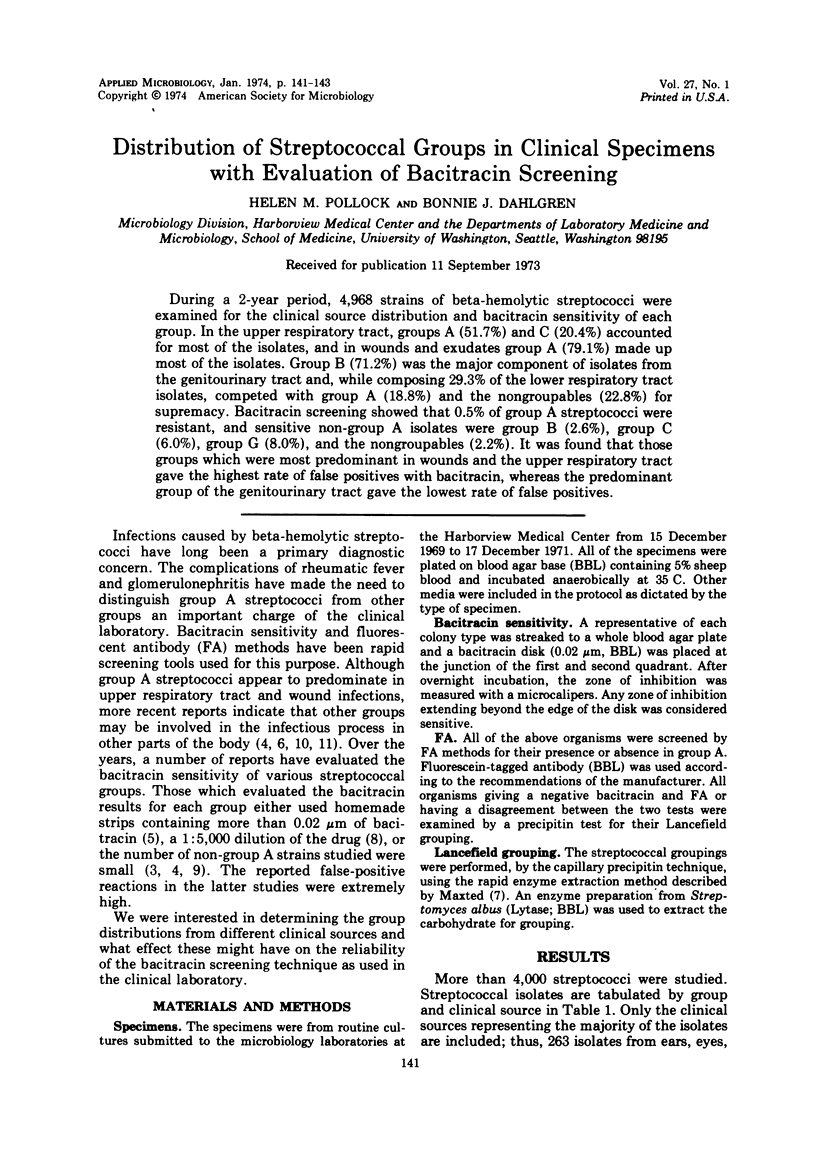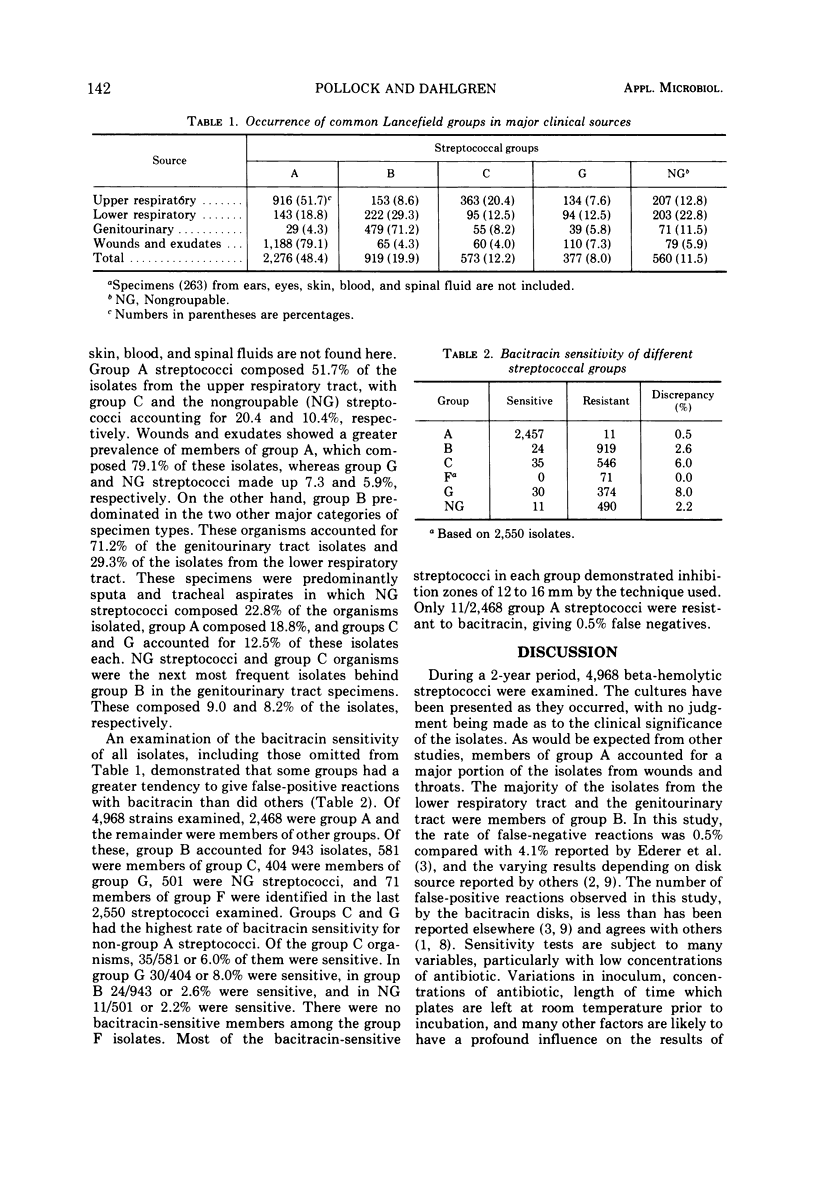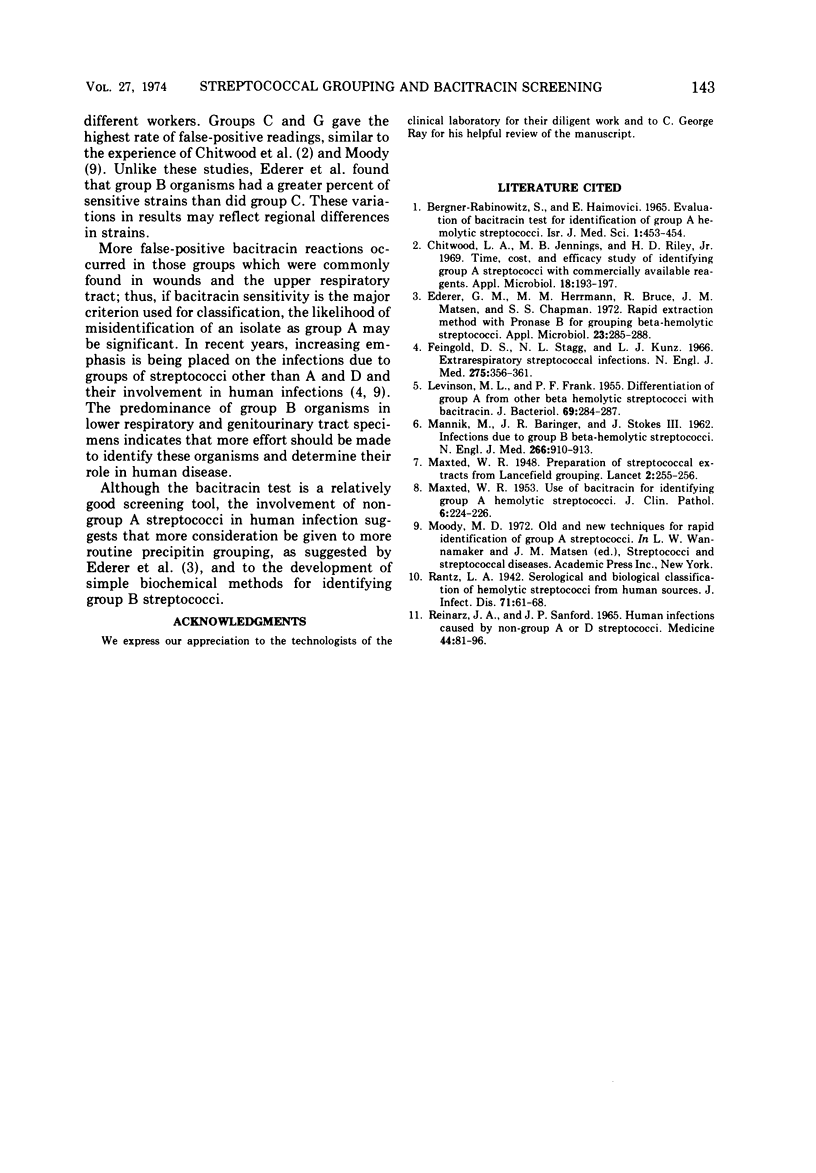Abstract
During a 2-year period, 4,968 strains of beta-hemolytic streptococci were examined for the clinical source distribution and bacitracin sensitivity of each group. In the upper respiratory tract, groups A (51.7%) and C (20.4%) accounted for most of the isolates, and in wounds and exudates group A (79.1%) made up most of the isolates. Group B (71.2%) was the major component of isolates from the genitorinary tract and, while composing 29.3% of the lower respiratory tract isolates, competed with group A (18.8%) and the nongroupables (22.8%) for supremacy. Bacitracin screening showed that 0.5% of group A streptococci were resistant, and sensitive non-group A isolates were group B (2.6%), group C (6.0%), group G (8.0%), and the nongroupables (2.2%). It was found that those groups which were most predominant in wounds and the upper respiratory tract gave the highest rate of false positives with bacitracin, whereas the predominant group of the genitourinary tract gave the lowest rate of false positives.
Full text
PDF


Selected References
These references are in PubMed. This may not be the complete list of references from this article.
- Chitwood L. A., Jennings M. B., Riley H. D., Jr Time, cost, and efficacy study of identifying group A streptococci with commercially available reagents. Appl Microbiol. 1969 Aug;18(2):193–197. doi: 10.1128/am.18.2.193-197.1969. [DOI] [PMC free article] [PubMed] [Google Scholar]
- Ederer G. M., Herrmann M. M., Bruce R., Matsen J. M., Chapman S. S. Rapid extraction method with pronase B for grouping beta-hemolytic streptococci. Appl Microbiol. 1972 Feb;23(2):285–288. doi: 10.1128/am.23.2.285-288.1972. [DOI] [PMC free article] [PubMed] [Google Scholar]
- Feingold D. S., Stagg N. L., Kunz L. J. Extrarespiratory streptococcal infections. Importance of the various serologic groups. N Engl J Med. 1966 Aug 18;275(7):356–361. doi: 10.1056/NEJM196608182750704. [DOI] [PubMed] [Google Scholar]
- LEVINSON M. L., FRANK P. F. Differentiation of group A from other beta hemolytic streptococci with bacitracin. J Bacteriol. 1955 Mar;69(3):284–287. doi: 10.1128/jb.69.3.284-287.1955. [DOI] [PMC free article] [PubMed] [Google Scholar]
- MANNIK M., BARINGER J. R., STOKES J., 3rd Infections due to group B beta-hemolytic streptococci. Report of three cases and review of the literature. N Engl J Med. 1962 May 3;266:910–913. doi: 10.1056/NEJM196205032661803. [DOI] [PubMed] [Google Scholar]
- MAXTED W. R. The use of bacitracin for identifying group A haemolytic streptococci. J Clin Pathol. 1953 Aug;6(3):224–226. doi: 10.1136/jcp.6.3.224. [DOI] [PMC free article] [PubMed] [Google Scholar]
- REINARZ J. A., SANFORD J. P. HUMAN INFECTIONS CAUSED BY NON-GROUP A OR D STREPTOCOCCI. Medicine (Baltimore) 1965 Jan;44:81–96. doi: 10.1097/00005792-196501000-00003. [DOI] [PubMed] [Google Scholar]


